Books by Dr. Jim Taylor
Dr. Taylor is the first author of 18 books and the lead or co-editor of five academic and professional books on topics as wide ranging as child rearing, the psychology of sport and dance, sports injury rehabilitation and management, and personal growth. All of the books share a common theme: helping people to maximize their abilities and achieve their goals. Dr. Taylor’s objective in all of his books is to offer deep insights, useful information, and practical tools that readers can use to better their lives. Dr. Taylor’s books are available through major bookstores, on-line booksellers, and this web site (see below for purchase links).
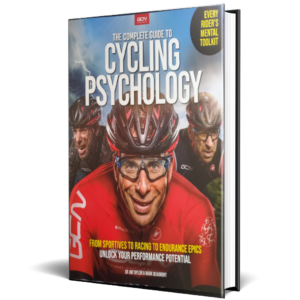
The Complete Guide to Cycling Psychology
The Complete Guide to Cycling Psychology takes the reader deep inside the psychology of cyclists, exploring the powerful impact that the mind has on cycling performance. The book has been structured to introduce readers to each concept and consider their own cycling psychology while giving them the insights, information, and tools they need to ensure that their mind is their greatest ally rather than their worst enemy; whether they’re off on a training ride, endurance epic, or race.
Chapters encompass the attitudes through which cyclists approach their cycling; the mental muscles cyclists need to strengthen alongside their bodies; the mental toolbox each cyclist needs to overcome the inevitable challenges of cycling, and; the building blocks of quality training that will help them achieve their cycling goals.

Change Your Life’s Direction
Many people think of inertia as an object at rest will stay at rest unless a force is exerted on it, like a boulder in a field. And people can think of their lives in the same way: static and unmoving. But we aren’t “stuck” in one place, as so many express when they are dissatisfied with their lives. Rather, our lives are moving swiftly and inexorably along a path driven by powerful forces—both past and present—that is highly resistant to a change in direction. As a result, small forces, such as a modest insight or a brief “aha!” moment, aren’t enough to catalyze significant change in how we think, what we feel, or how we act on or react to our world. In fact, meaningful change can only occur when forces are applied that are greater than the forces that are already propelling our lives. Seeing our lives from this dynamic perspective is the foundation for understanding what it takes to bring meaningful and long-lasting positive change to our lives.
Dr. Jim Taylor introduces the four forces that can control our “life-inertia” and propel our lives: values, self-esteem, ownership, and emotions. These forces show themselves through the lens with which we view the world, the emotional reactions we have, the actions that we take, and the relationships that we create. He then explains how to harness them to our own benefit, so that we may steer our lives in the direction of our own choosing, rather than allowing our past inertia or outside forces to dictate the direction our lives take. By letting our values guide us, building our self-esteem, taking ownership of our decisions and actions, and using our emotions as positive fuel, we can break free from our past inertia, take control of our lives, and chart a future of meaning, happiness, success, and connection with confidence, commitment, and courage.
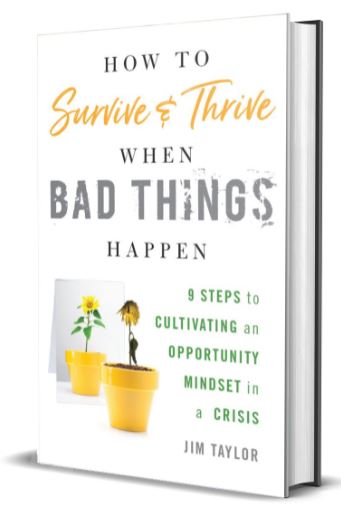
How to Survive & Thrive When Bad Things Happen
Few of us go through life without experiencing some sort of crisis, whether health, financial, relationship, career, or personal safety. Crises happen and they are often out of our control. But the one thing we can control is how we respond to them. Yet, our natural instincts often hinder us as we confront today’s crises that are complex, amorphous, and not readily solvable. Changing our reaction to a crisis is an immense challenge, yet with powerful lessons provided in these pages, anyone can turn crises into opportunities for reflection, positive action, and growth. Turning crises into opportunities empowers you to overcome the darkness that can engulf you in troubled times and allow you to seek the light that can guide you through hard times. Break free from the crisis mentality and embrace an opportunity mindset with nine strategies that will not only help you to survive, but actually thrive, when bad things happen.

Raising Young Athletes
In Raising Young Athletes: Parenting Your Children to Victory in Sports and Life, Dr. Jim Taylor—an internationally-recognized authority on sport psychology, child development, and parenting—offers a guiding hand to help parents ensure that their children’s sports participation encourages positive attitudes and promotes healthy development as they move toward adulthood. The role of parents in shaping their children’s sports experience has never been more important, and Dr. Taylor shows parents how to send the right messages to their young athletes with clear and practical advice. Whether playing sports just for fun or with aspirations to play professionally, Raising Young Athletes helps parents steer their children toward a healthy, positive experience. As such, their participation will become an impactful part of their lives that will prepare them to be victorious both in sports and in life.
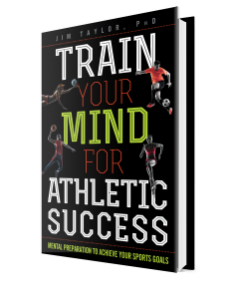
Train Your Mind for Athletic Success
In Train Your Mind for Athletic Success, Dr. Jim Taylor uses his own elite athletic experience and decades of working with some of the world’s best athletes to provide competitors in every sport and at every ability level with insights, practical exercises, and tools they can use to be mentally prepared to perform their best when it matters most. The Prime Sport System explores attitudes that lay the foundation for athletic success, the mental obstacles that can hold athletes back, the mental muscles they must strengthen, and the mental tools they need to fine-tune their competitive performances. Train Your Mind for Athletic Success goes well beyond the typical mental skills that are discussed in other mental training books. Readers will not only learn why mental preparation is so important to athletic success, but also where they personally are in each area thanks to brief mental assessments in each section of the book. In addition, each chapter includes exercises to show athletes how to incorporate mental training directly into their overall sport training regimen. The most comprehensive and in-depth book on mental preparation for athletes available, Train Your Mind for Athletic Success is an essential read for athletes, coaches, and parents.
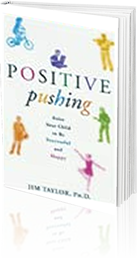
Positive Pushing
The challenge of balancing childhood achievement and happiness often puts parents in a position of uncertainty. If children are pushed too hard, they may rebel and achieve neither success nor happiness. If parents don’t push enough, their children may be self-satisfied and unmotivated. Parents often feel they must choose between two alternatives: sheltering their children from the cruel realities of the world so they can experience a “happy childhood” or driving their kids so they can get into the best schools and achieve financial success as adults. Dr. Taylor avoids this “either/or” choice that parents face and, instead, shows that…

Raising Generation Tech
A practical guide for helping your children navigate the influential and omnipresent world of technology. Today’s children are being raised as ‘digital natives’ in a world dominated by popular culture and technology. TV shows, computers, video games, social networking sites, advertisements, and cell phones too often have an unnecessarily strong—and negative– influence on children. But pulling the plug just isn’t an option in a world where being connected is essential for success. In Raising Generation Tech, the noted parenting and new-media expert Dr. Jim Taylor explores how popular culture and technology shape children’s lives. The essential message from Raising Generation Tech is that…

Your Children Are Listening
From Dr. Jim Taylor, a trusted parenting expert and author — a practical guide to staying “on message” with your children, including the nine essential messages to get your children off to a great start on life. At the heart of this insightful, resonant, and practical book is the realization that children become the messages they get the most. These messages are imparted not only through parents’ word, emotions, and actions, but also through simply who parents are. Given the inherent power that parents have in shaping their children through their messages, the core question parents should be asking themselves is, “How can I…

Your Children Are Under Attack
Your children are under attack. This assault is not coming from terrorists within or outside our borders. It is not coming from disturbed people in our communities. This onslaught is coming from our own American popular culture. This assault is ever-present, intense, and unrelenting. This siege is also in disguise; most parents cannot sense the harm popular culture is inflicting on their children any more than a fish can sense that their ocean is becoming ever more polluted. Many of us seem to have been fooled into believing that popular culture cares about our children. It doesn’t! Popular culture cares about only one…

The Triathlete’s Guide to Mental Training
The Triathlete’s Guide to Mental Training introduces readers to the all-important role that the mind plays in triathlon training and competition. This first-of-its-kind book explores the mental areas that either fosters triathlon success or leads to triathlon failure, including motivation, confidence, intensity, focus, emotions, and pain. Readers learn essential mental tools, such as goal setting, mental imagery, and routines. They also learn how to improve the quality of training and how to avoid overtraining, burnout, and injury. The book offers a section addressing special concerns that triathletes will find valuable, including Ironman training and racing, the unhealthy side of triathlon, and a unique chapter offering lessons from the world’s best triathletes. Ultimately, The Triathlete’s Guide offers readers practical information and useful skills to help them overcome the many challenges with which they are confronted in triathlon.

Dance Psychology for Artistic and Performance Excellence
Dance Psychology for Artistic and Performance Excellence, authored by Drs. Jim Taylor and Elena Estanol, helps dancers develop the psychological tools to maximize their performance. The book covers all the mental aspects of dance performance and offers practical exercises that will make dancers’ minds their most powerful allies. Dancers will be able to build a strong foundation for performance through the book’s numerous psychological strategies, which have been specifically written for dancers. The text offers a comprehensive, individualized program that dancers can use to reach their potential in artistry and excellence in school, the dance profession, and in dance-related careers. And the book comes with a companion web resource that contains 32 worksheets that will help dancers grow mentally through reflection and self-examination. Dancers will be able to use and reuse these tools to refine their technique and overcome performance challenges. To help dancers elevate their performance, the authors explore these concepts in the context of dance performance, and provide practical exercises for each concept: Self-knowledge Motivation Confidence Intensity Focus Emotions Goal-setting Imagery The authors also examine the foundations of dance psychology and delve into special concerns for dancers including stress and burnout, pain and injury, and disordered eating, and how to ensure that dance is a life-affirming experience for all who dance.
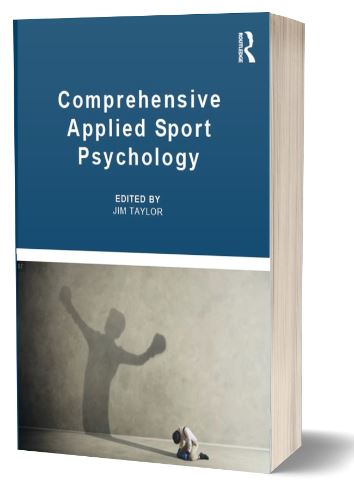
Comprehensive Applied Sport Psychology
Comprehensive Applied Sport Psychology (CASP) is the first professional book that offers a truly expansive and deep exploration of just about everything that applied sport psychologists and mental coaches do in their work. CASP plumbs the depths of the athletic mind including attitudes, psychological and emotional obstacles, mental “muscles” and mental “tools,” quality of sport training, the health and well-being of athletes, and other areas that are essential to athletic success. It also examines coaches, teams, parents, and working with others involved in sports such as sports medicine teams and sports management. CASP is grounded in the latest theory and research as well as the practical experience of its contributors, making it a valuable resource for academics, students, and practitioners alike. The goal of CASP is to create the definitive guide to what applied sport psychology and mental training are and do.
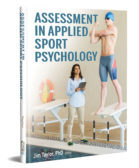
Assessment in Applied Sport Psychology
Assessment in Applied Sport Psychology is a comprehensive resource that offers both students and professionals the opportunity to hone their skills to help their clients, starting with the initial consultation and lasting through a long-term relationship. In this text, Jim Taylor and a team of sport psychology experts help practitioners gain a deep understanding of assessment in order to build trusting relationships and effective intervention plans that address the needs and goals of their clients. Assessment in Applied Sport Psychology works toward two main goals. The first is to help consultants gain a complete understanding of their clients through the use of a broad range of assessment tools. The second is to show consultants how to ethically and effectively use assessments to develop a comprehensive understanding of their clients, thus enabling them to assist their clients in achieving their competitive and personal goals.

Practice Development in Sport and Performance Psychology
Dr. Jim Taylor and an experienced team of authors provide a foundation of knowledge and skills necessary to establish and maintain a consulting business in sport and performance psychology. A must-read for graduate students and professionals alike. This book explores the gamut of issues related to building a successful consulting business including creating a unique value proposition, writing a business plan, branding and marketing, using social media, how to cultivate clients, and much more. Says Kate Hays, Ph.D., Past president, APA Division of Sport & Exercise Psychology, “This book provides a blueprint and a process for establishing a consulting business and offers ideas that you can return to regularly to keep your consulting business moving forward.”

Applying Sport Psychology
Applying Sport Psychology: Four Perspectives offers professors, students, and professionals in the field, as well as coaches and athletes, a comprehensive survey of major issues in applied sport psychology. What makes this book unique is that it provides information and insights from some of the world’s best minds who generate, disseminate, and use sport psychology information: researchers, consultants, coaches, and athletes. Applying Sport Psychology is organized into four parts: Psychological Factors Athletic Performance (motivation, confidence, intenisty, focus, and emotions), Enhancing Athletic Performance (psychological assessment, goal setting, mental imagery, and routines), Psychology and the Coach (coach-athlete relationship, team dynamics), and Psychological Problems of Athletes (injuries, eating disorders, substance abuse, and career transition). Readers will gain a thorough and in-depth knowledge of the most significant issues in the field of sport psychology.

Psychological Approaches to Sports Injury Rehabilitation
With Psychological Approaches to Sports Injury Rehabilitation, sports medicine professionals and injured athletes develop a clear understanding of the psychological and emotional issues that impact athletic injury and rehabilitation. They also learn practical information and skills they can use to enhance the rehabilitation process. Readers are shown how to incorporate psychological considerations into traditional rehabilitation programs so that psychological and emotional factors facilitate rather than interfere with rehabilitation. Find out how to recognize psychological barriers to effective rehabilitation including poor motivation, low confidence, depression, pain, and fear of reinjury. Learn how to design easy-to-follow psychological rehabilitation programs. Use simple and practical tools such as positive self-talk, focusing, relaxation, and imagery to rehabilitate the psychological “muscles.” Psychological Approaches to Sports Injury Rehabilitation is the first resource to help injured athletes overcome the psychological obstacles to a complete recovery and return-to-sport. The goal of this book is to assist injured athletes in having a timely and successful recovery and enable them to be physically and psychologically prepared to return to their sport ready to perform again at their highest level.

Comprehensive Sports Injury Management
This book is directed toward and will benefit all sports medicine professionals who work in the injury management process including orthopedists, nurses, physical therapists, athletic trainers, psychologists, chiropractors, massage therapists, and others. The objective of this book is to create in these professionals an understanding of and the desire and ability to use this comprehensive information and strategies in their day-to-day work in the injury management process. With this knowledge, sports medicine professionals at every stage of the injury management process can accomplish two essential goals. First, they can fully understand all of the issues that will impact their patients’ recovery experiences. Second, they can ensure that all of these concerns will contribute to, rather than impede, the injury management process. Three influential areas will be addressed in terms of their effect on day-to-day and long-term injury management. First, physical issues that the patient will encounter including injury-specific information such as the nature of the damage, pain, and rehabilitation in addition to more general physical concerns such as rest and effects on overall health. Second, psychological issues that the patient will face including anger over the injury, post-operative depression or anxiety, confidence in the rehabilitation program, motivation to maintain rehabilitation, and loss of identity. Finally, logistical issues related to how the injury will affect the patient’s daily life, such as how it will impact their ability to work, mobility around the house, and satisfaction of basic needs such as bathing, transportation, and shopping. There are three primary goals of this book. First, to identify important physical, psychological, and logistical issues that would benefit patients. Second, to provide practical information, guidelines, approaches, and strategies to ensure that these issues facilitate rather than interfere with the injury management process. Third, to offer sports medicine professionals a structured framework with which to provide patients with this essential information. These concerns will be addressed within a chronological framework of a four-stage process of injury management: examination of injury, surgery (when necessary), rehabilitation, and return to activity. Within each stage, issues that most impact the quality of the patient’s experience will be introduced and described. In addition, practical ways of dealing with each issue will be considered with special emphasis on providing clear information, and simple and practical approaches and techniques to manage them most efficaciously.

I Couldn’t Disagree More
My career as a professor, researcher, consultant, writer, and speaker has been driven by the simple, yet powerful, desire to create and share ideas. I Couldn’t Disagree More: Insight, Inspiration, and Irreverence from an Idea Guy, a compilation of my blog posts from PsychologyToday.com and HuffingtonPost.com from 2009-2011, is an expression of that desire. My blogging began as a venue for contributing to the intellectual marketplace and to question the status quo, challenge the convention wisdom, and offer new perspectives on the complex world in which we live. The Internet has given me a soapbox from which to advocate for reason, fairness, compassion, and civility, and to call out those who use power, misinformation, sophistry, and fear to distort the truth and manipulate ideas for their own selfish interests. As you will see in this book, my ideas reflect my broad interests including politics, popular culture, technology, business, education, sports, and the human condition. I hope you find my blog posts enlightening, entertaining, and even, on occasion, infuriating. I expect you will agree with some of my ideas and disagree with others. More than anything, though, I hope my ideas provoke ideas of your own and perhaps even inspire you to share them as I have.
